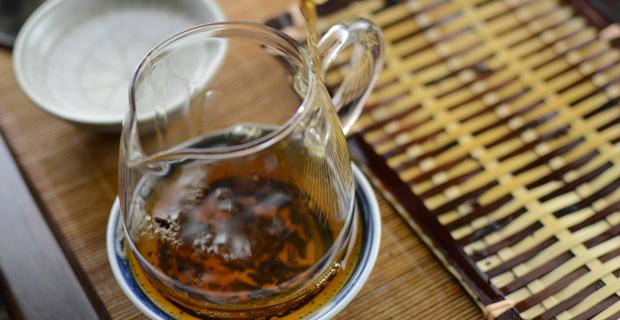What is Gongfu Style Brewing?
Gong fu style means brewing tea with skill. Rather than focus on the history or specifics of the ceremonial aspects of Gong fu style tea brewing, this article contains practical guidelines about how to brew in a similar style at home by using step-by-step instructions. For those interested in more detailed background information, wikipedia to the rescue!
What are the Necessary Tools?
The following teaware and tools will make the gong fu brewing experience rich and rewarding. Should this list look too daunting, check out our article on easy tea brewing (only 3 items required!):- Gongbei [shared pitcher]
- Teatray
- Gaiwan [lidded bowl] or a small teapot, 100ml-200ml is preferable
- Tea needle, used to break apart pressed puerh tea
- Tea
- Cup(s)
- A small towel
- Scale (pictured below)
- Boiling water (pictured below)
- Filter (pictured below
Step 1. Prepare Your Tea and Water
First, begin boiling your water. By the time you are finished with breaking apart your tea, the water will be ready. Most puerh teas are pressed into forms such as cakes or bricks. If your tea is loose, skip to weighing. If your teas is pressed, take your tea needle or tea knife and find a place on the side to gently work the tip into the side. Take caution to aim the tip away from your hands. This will protect you in case your hand slips. After breaking off a chunk of tea, place the tea on your scale and measure the desirable amount for your brewing vessel. A good rule of thumb is to use 1 gram of tea for each 15 milliliters of water the vessel can hold. Our gaiwan is 120 mL. We decided that we wanted a stronger brew, so we added a gram to the 8 gram suggestion and used 9 grams of tea. (120 grams / 15 mL = 8 grams + 1 gram for a stronger brew). If you desire a lighter brew, you could also subtract a gram or two. We encourage new puer drinkers to take notes on their sessions to help them determine their own preferences. The chunk of tea is still very tightly compressed. A rock of tea like this will take a very long time to open up when brewing. In order to allow for a more even steeping experience, we picked the tea apart further. By wedging the needle in to the side of the piece of tea we are able to flake off more tea and increase the surface area. The increased surface area will allow for more even brewing and allow the tea to open up more quickly.
Step 2. Warming your Teaware
Take your boiling water and pour a rinse over your gaiwan, cups, and gongbei. This rinse will both clean your teaware and raise the temperature of the vessels. Especially during winter months in colder climates, cold teaware can drastically affect the temperature of the water and tea. Remember, the water will be passed between all three vessels before it arrives at your mouth. If all three vessels are cold, it could drop the temperature from 100°C to 80°C very quickly.
Step 3. Rinse the Tea
Use the boiling water to rinse the puerh tea. Puerh tea is often aged and a rinse will help to remove any undesirable dust, as well as awaken the tea from its slumber. After pouring the water out of your gaiwan, take this opportunity to smell the lid. The lid and leaves will begin to release their fragrances. After each steep, the fragrance should evolve and give you insight into the tea and deepen the experience. The rinse water can be poured into the gongbei and cups. Afterwards, pour the rinse water out over the tea tray. After the cups or gongbei have returned to a temperature that is comfortable to rest on the back on your hand, take a long smell from either the cup or gongbei; this fragrance will be different from the gaiwan lid, but should be equally pleasant.
Step 4. Start Steeping
Your water is boiling. Your tea is rinsed. Place your filter in your gongbei and you are ready to brew! The first steep in Gongfu style brewing is a fast pour on and pour off affair. The tea is not yet wide open, so steeping for 5 seconds is fine. Pour the water on and pour it off. For future steeps, continue to increase the steep time by about 5 seconds or so each steep. This is not an exact science. Different teas have different compression and open up at different paces. If the tea is too strong, either remove some leaf or decrease the steep time. If the tea is too weak, increase the steep time or if the tea really needs a boost, add more leaf.

